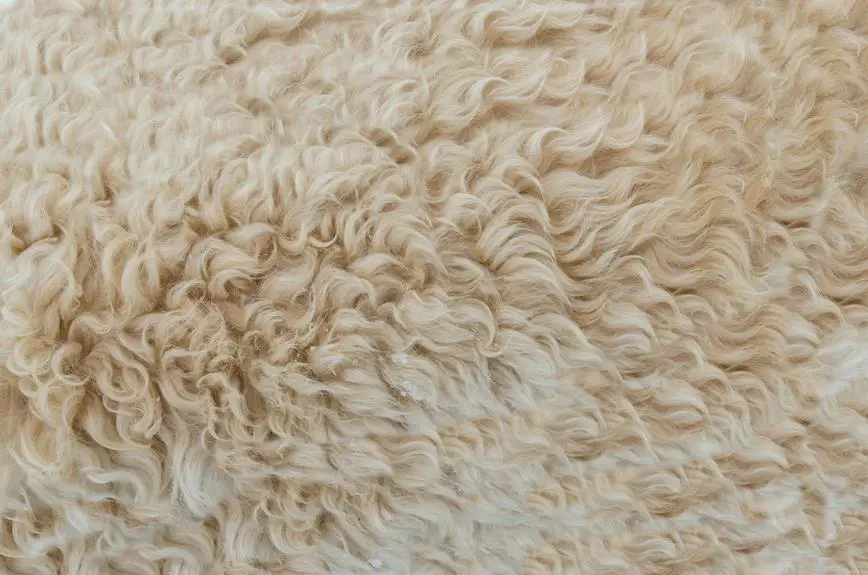You might be wondering if Madras Plaid offers a hypoallergenic solution for your wardrobe. Given its composition of natural cotton fibers and its breathability, it appears to be a favorable choice for those with sensitive skin. However, not all fabrics are created equal, and there could be factors you haven't considered that might influence your comfort and health. What role do common allergens play in your fabric choices, and how does Madras Plaid stack up against the alternatives? Let's explore this further to uncover the details.
Table of Contents
Understanding Madras Plaid Fabric
Madras plaid fabric, known for its vibrant colors and distinct patterns, originally hails from India and offers a lightweight, breathable option for warm-weather wear. When you choose Madras, you're opting for a textile that showcases a blend of cotton and sometimes silk, making it not just visually appealing but also comfortable against your skin. The fabric's unique quality lies in the way it's woven, giving it variations in color and texture that stand out.
This plaid is often made using a hand-weaving technique, which means you'll find slight imperfections that add character. As a result, you can embrace authenticity when you wear Madras plaid. The vibrant colors are typically achieved through a process of dyeing fabrics before they're woven, so you get eye-catching patterns that are perfect for casual outings or summer events.
Whether you're aiming for a classic look or a trendy vibe, Madras plaid can easily adapt to your style. It's commonly used in shirts, shorts, and tablecloths, making it a versatile choice that brings a touch of warmth and personality to any setting.
Common Allergens in Fabrics
Certain fabrics can harbor common allergens, which may cause skin irritation or allergic reactions in sensitive individuals.
Fabrics made from synthetic materials, like polyester and nylon, often contain chemical treatments and dyes that can trigger sensitivities. If you have a history of skin allergies, it's wise to be cautious with these options.
Natural fabrics aren't immune either; cotton can sometimes be treated with harsh chemicals during the manufacturing process. Additionally, wool is known to cause irritation in some people due to its coarse fibers.
Don't forget about additives such as detergents, fabric softeners, or even fragrances. These can cling to fabrics and provoke allergic reactions as they interact with your skin.
You'll also want to consider any allergens that may be hiding in the environment, like dust mites and mold, which can thrive in certain textiles.
Knowing which materials might trigger reactions is crucial when shopping for clothes or linens. By being informed, you can make choices that minimize your exposure to allergens, ensuring comfort and peace of mind in your fabric selections.
Hypoallergenic Properties of Madras Plaid
The hypoallergenic properties of Madras Plaid make it a suitable choice for those prone to textile sensitivities. This unique fabric typically contains cotton or cotton blends, which are less likely to irritate your skin compared to synthetic fibers.
Cotton is naturally breathable, allowing air circulation that helps regulate body temperature and reduces sweat buildup, a common trigger for allergic reactions. You might also appreciate that Madras Plaid is often made without chemical treatments or dyes that can cause allergies.
When searching for a fabric, look for options labeled as organic or untreated; these will minimize your exposure to allergens. Madras Plaid's lightweight nature prevents the fabric from clinging to your skin, which further lowers the chance of irritation.
Moreover, the loose weave of Madras Plaid helps reduce dust and other tiny particles from settling on the fabric, making it easier for you to keep clean and allergy-free.
If you're considering using Madras Plaid for clothing, home decor, or accessories, you can feel confident that it can be a friendly option for your sensitive skin. Ultimately, Madras Plaid's hypoallergenic traits allow you to enjoy comfort without compromising your health.
Comparing Madras Plaid to Other Fabrics
When you compare Madras Plaid to other fabrics, you'll notice its hypoallergenic benefits set it apart from many synthetic options commonly found in the market. Unlike polyester or nylon, which can trap allergens and irritants, Madras Plaid is usually crafted from 100% cotton or other natural fibers. This quality makes it a great choice for anyone sensitive to allergies.
Here are some key comparisons:
- Breathability: Madras Plaid allows for air circulation, reducing the risk of moisture retention that can lead to mold and dust mites.
- Chemical-Free: Often made without harsh chemicals, it minimizes skin irritation risks, something synthetic fabrics can't guarantee.
Choosing Madras Plaid not only enhances your style but also supports a healthier lifestyle. Its hypoallergenic properties, combined with its classic design, make it a smart choice over synthetic fabrics, especially if you prioritize comfort and health in your wardrobe.
Care Tips for Madras Plaid
When it comes to caring for your Madras plaid pieces, proper washing and storage are key.
You'll want to follow specific washing instructions to keep the colors vibrant and the fabric in good shape.
Additionally, storing your Madras plaid correctly can help maintain its quality for years to come.
Washing Instructions for Care
To keep your Madras plaid looking vibrant, wash it in cold water with a gentle detergent. Avoid using bleach or harsh chemicals, as these can fade the colors and damage the fabric. You'll want to turn the garment inside out before washing to protect the outer layer.
Here are a few more tips to ensure your Madras plaid stays in top condition:
- Air Dry: Lay it flat or hang it to dry. This method prevents shrinkage and helps maintain the fabric's integrity.
- Iron Carefully: If necessary, iron your Madras plaid on a low setting while it's still slightly damp to help smooth out any wrinkles.
Following these washing instructions will help your Madras plaid maintain its beautiful patterns and textures.
By taking a few extra steps during the wash cycle, you can enjoy your vibrant plaid pieces for years to come.
Storage Recommendations for Longevity
Proper storage can further enhance the longevity of your Madras plaid garments after you've taken the time to wash them correctly.
Start by ensuring they're completely dry to prevent mold and mildew. Once dry, fold your Madras plaid items neatly instead of hanging them. Hanging can stretch the fabric and alter the fit.
It's best to store these garments in a cool, dry place, away from direct sunlight. Sunlight can fade those vibrant colors, so consider using cotton garment bags for extra protection. If you're storing them in a drawer, opt for breathable storage bins to allow air circulation.
To keep your fabrics fresh, add lavender sachets or cedar blocks, which deter moths and other pests without harsh chemicals. Also, avoid plastic bags, as they trap moisture and can lead to unwanted odors or mildew.
If you have seasonal Madras plaid pieces, consider vacuum-sealing them after cleaning. This not only saves space but also protects them from dust and odors.
Following these storage tips will help maintain the charm and quality of your Madras plaid garments, keeping them looking great for years to come.
Final Thoughts on Allergens
When considering allergens in fabrics, it's important to know what materials make up your Madras plaid.
Different fabrics can harbor common allergens, which can affect your comfort and health.
If you're prone to allergies, choosing hypoallergenic options can help you enjoy your style without the sneezes.
Common Allergens in Fabrics
Allergic reactions to fabrics often stem from common allergens like dyes, detergents, and textiles themselves. When you choose clothing or home textiles, it's crucial to be aware of these potential irritants lurking in your garments.
Some fabrics contain synthetic materials that may provoke allergic responses, while others are dyed with chemicals that can also be problematic.
Here are three common allergens found in fabrics:
- Dyes: Many dyes can trigger skin reactions, especially azo dyes, which are sometimes used in vibrant patterns.
- Detergents: Fabric softeners and laundry detergents can leave residues on clothes, leading to discomfort for those with sensitivities.
Madras Plaid Materials
Considering its origins, Madras plaid is often made from lightweight cotton, which typically reduces the likelihood of allergic reactions compared to synthetic alternatives. Cotton is breathable, soft, and less likely to irritate the skin, making it a favorable choice for those sensitive to various allergens.
Here's a quick comparison of common materials found in Madras plaid:
| Material | Allergy Potential |
|---|---|
| Cotton | Low |
| Linen | Low |
| Polyester | Moderate to High |
| Acrylic | Moderate to High |
| Blends | Variable |
When choosing Madras plaid, keep in mind that natural fibers like cotton and linen are generally safer bets for those concerned about allergens. On the other hand, synthetic materials like polyester and acrylic may contribute to skin sensitivities or allergic reactions. Your best approach is to always check the fabric content before making a purchase. If you're prone to allergies, opting for natural fibers not only ensures comfort but also minimizes risks associated with materials that might trigger reactions. Happy shopping!
Choosing Hypoallergenic Options
Choosing hypoallergenic options can significantly improve your comfort and wellbeing, especially if you're sensitive to various materials.
When you make informed choices about the textiles and products you bring into your home, you minimize potential allergic reactions and enhance your quality of life.
To effectively identify hypoallergenic options, consider these strategies:
- Research materials: Look for fabrics like organic cotton, bamboo, or polyester designed for sensitive skin. These materials often resist common allergens and irritants.
- Check for certifications: Products labeled with certifications such as OEKO-TEX or GOTS indicate adherence to strict safety and environmental protocols, reducing potential allergen exposure.
Frequently Asked Questions
Can Madras Plaid Cause Allergic Reactions in Sensitive Individuals?
Madras plaid can potentially cause allergic reactions in sensitive individuals, especially if the fabric contains dyes or chemicals. It's best to test for reactions by wearing a small piece before committing to a larger item.
What Materials Are Typically Used in Madras Plaid Fabrics?
Madras plaid fabrics typically use cotton, linen, or a mix of these materials. These lightweight textiles offer breathability and comfort, making them popular for summer clothing and casual wear. You'll enjoy their vibrant colors and patterns!
Is Madras Plaid Suitable for Babies or Toddlers?
When considering madras plaid for babies or toddlers, you'll find it durable and stylish. Just ensure it's made from soft, breathable materials. Comfort is crucial for little ones, so prioritize their needs when choosing fabrics.
How Does the Dyeing Process Affect Hypoallergenic Properties?
The dyeing process can introduce allergens depending on the chemicals used. You might want to consider natural dyes for better hypoallergenic properties, as synthetic dyes often contain irritants that could provoke allergic reactions in sensitive individuals.
Are There Any Specific Brands Known for Hypoallergenic Madras Plaid?
You might want to explore brands like Patagonia and Lands' End, known for their commitment to hypoallergenic materials. Always check product specifications for dye processes and fabric types to ensure they meet your sensitivities.
- How Does Ring Spun Cotton Affect Garment Fit and Shape Retention? - August 13, 2024
- What Are the Challenges in Producing Ring Spun Cotton? - August 13, 2024
- Is Ring Spun Cotton Suitable for Plus-Size Clothing? - August 13, 2024







